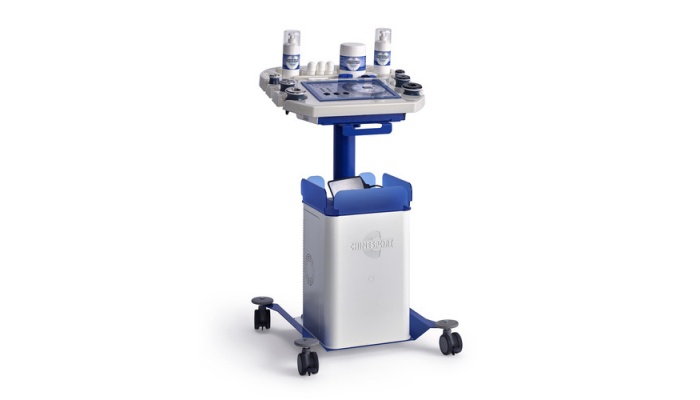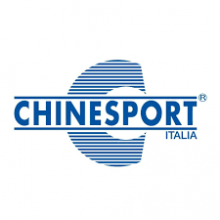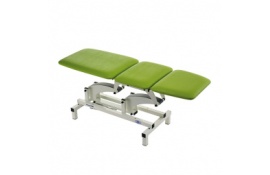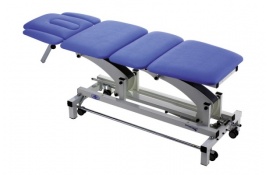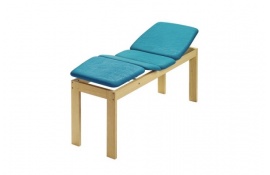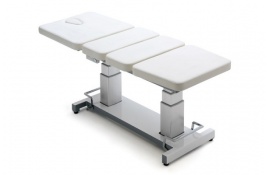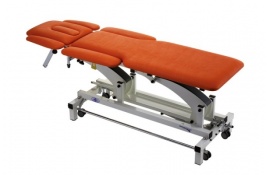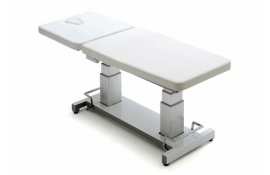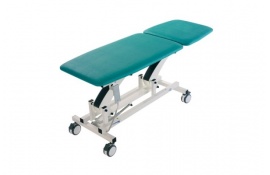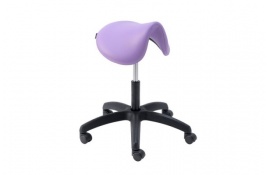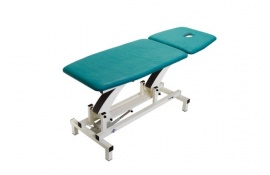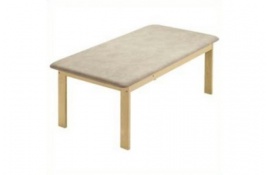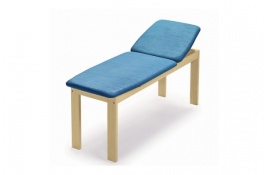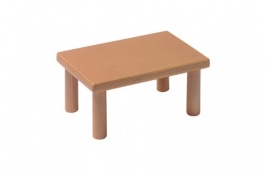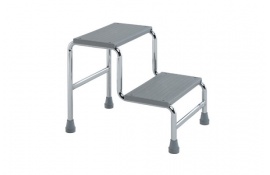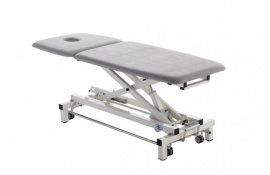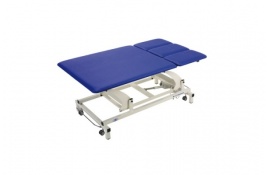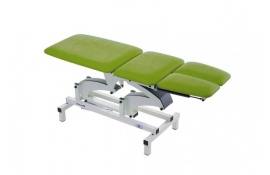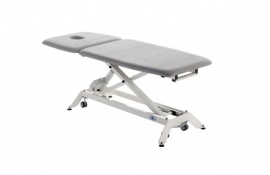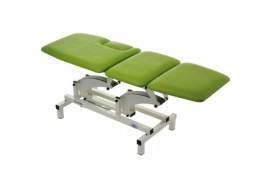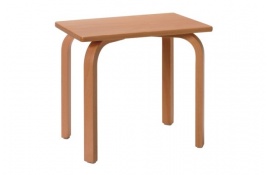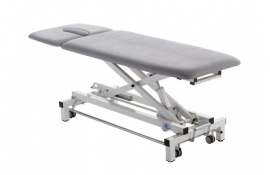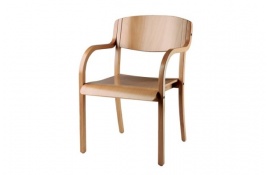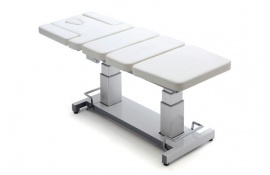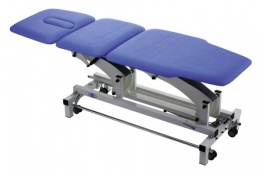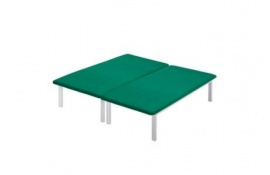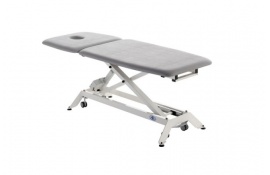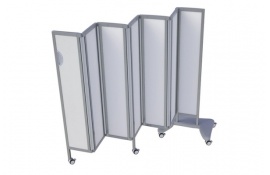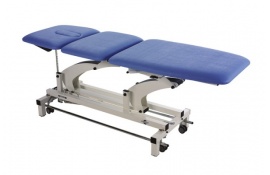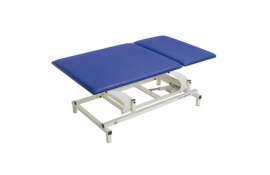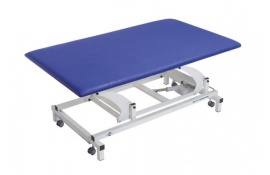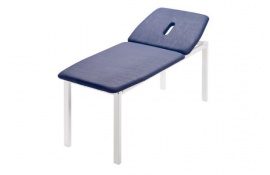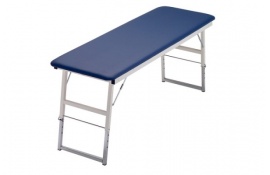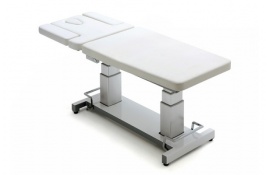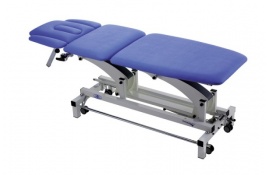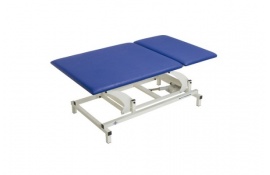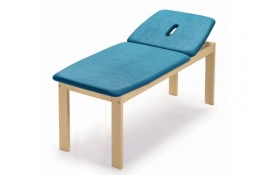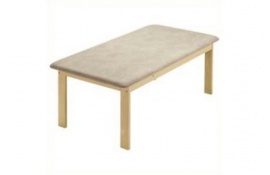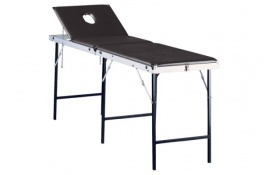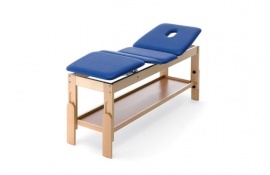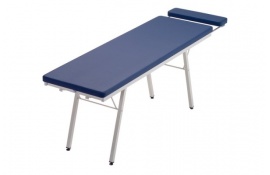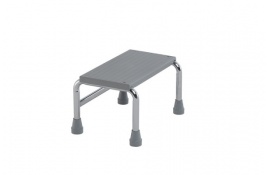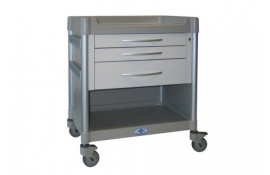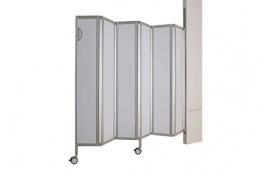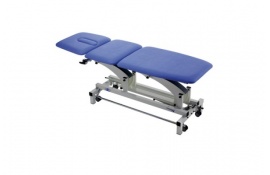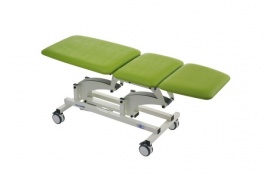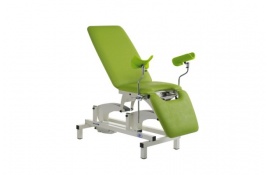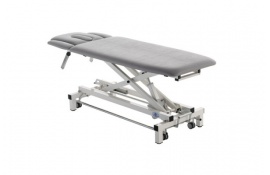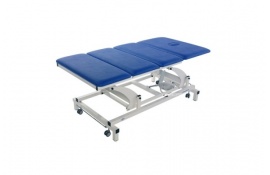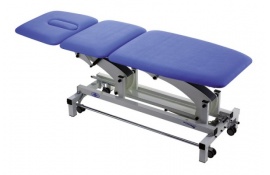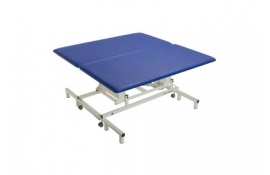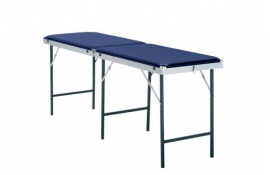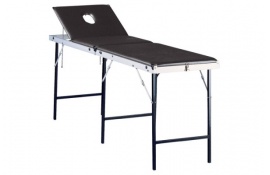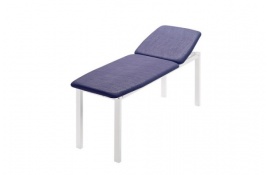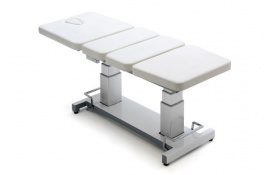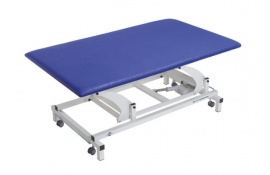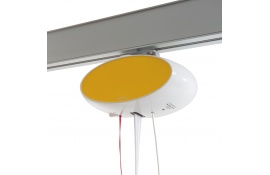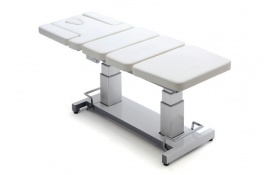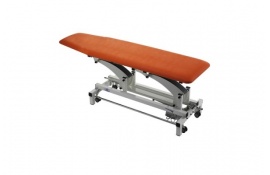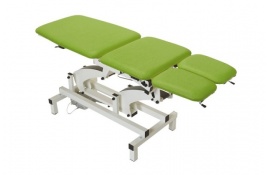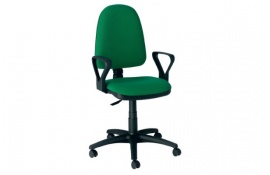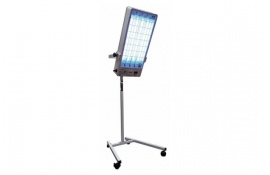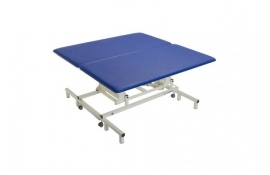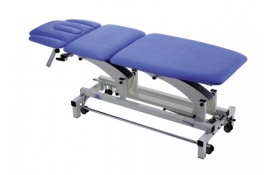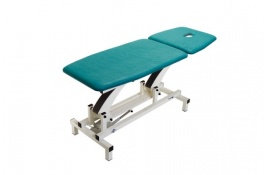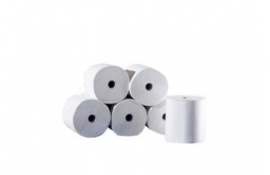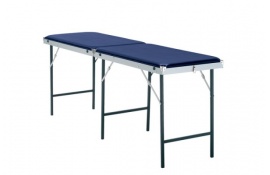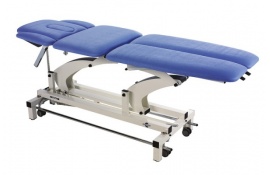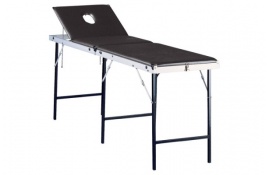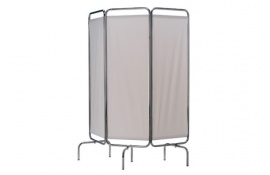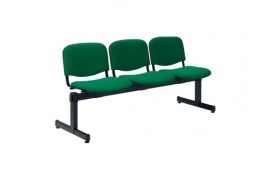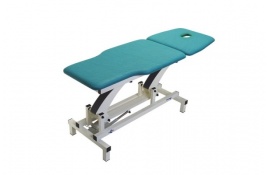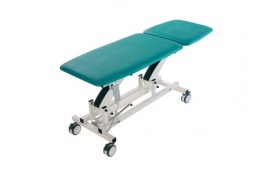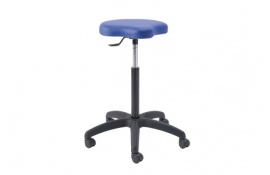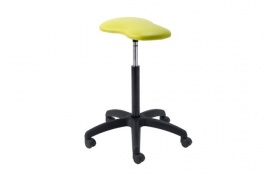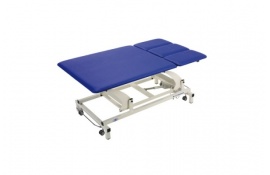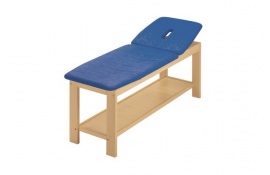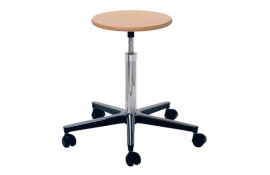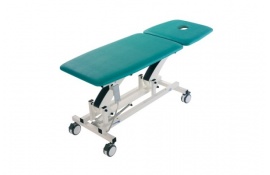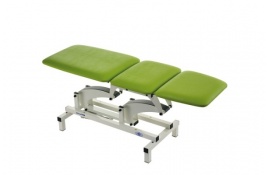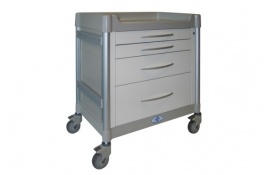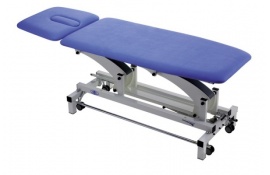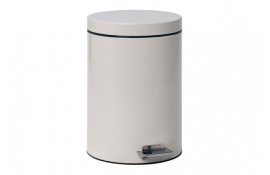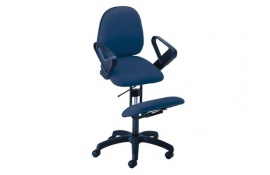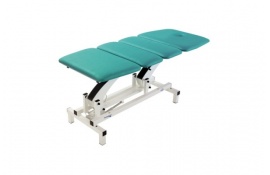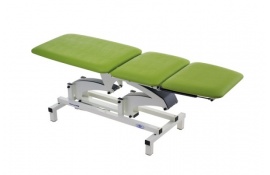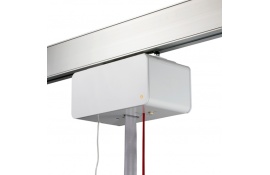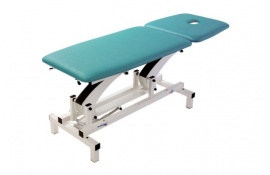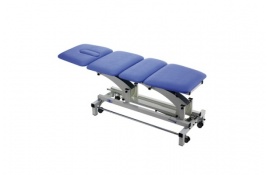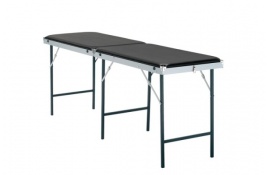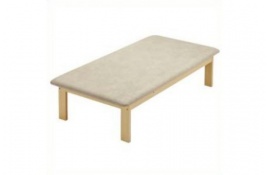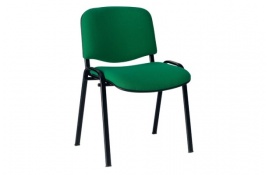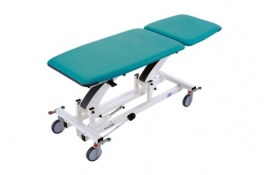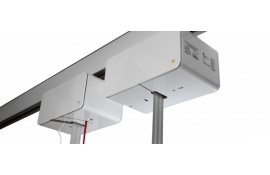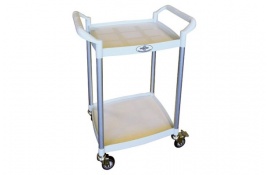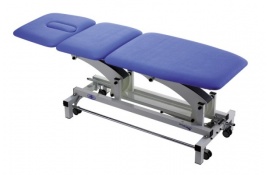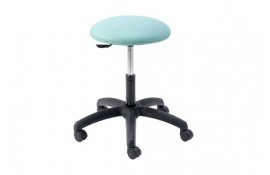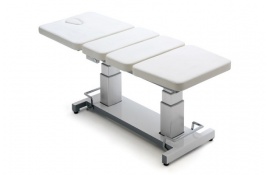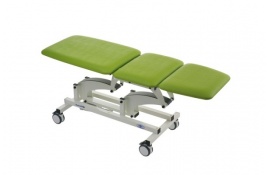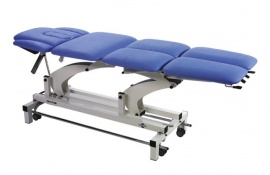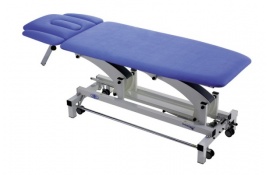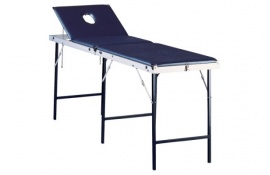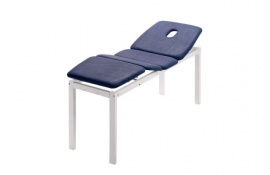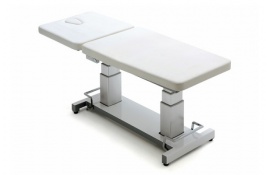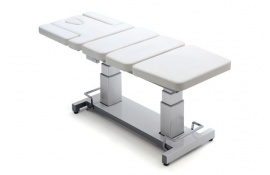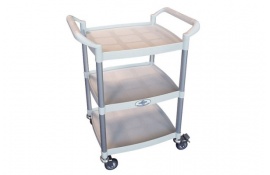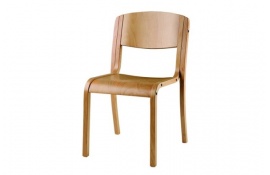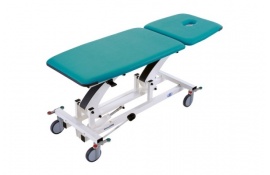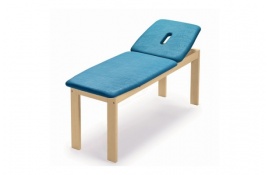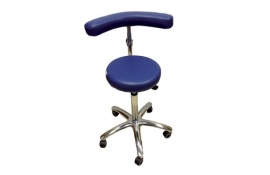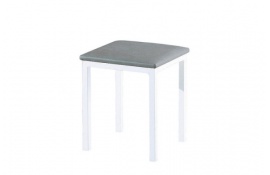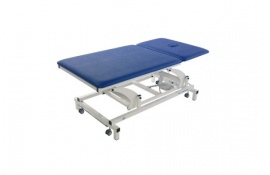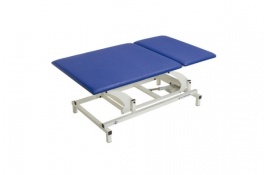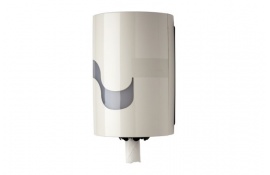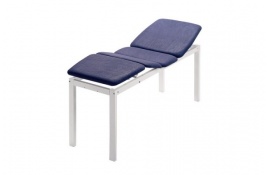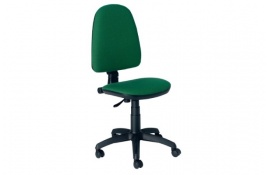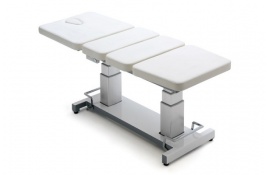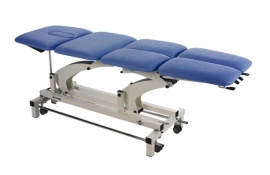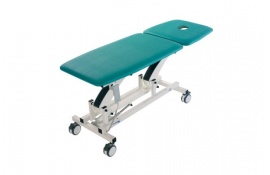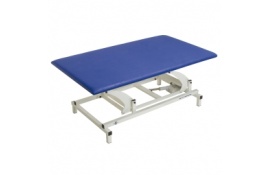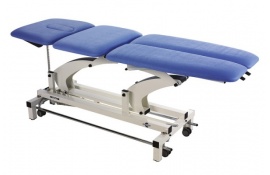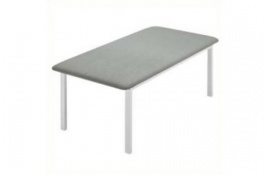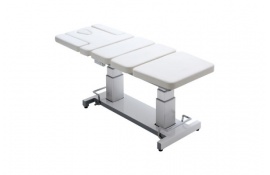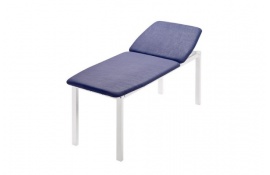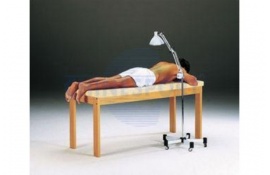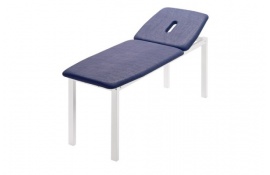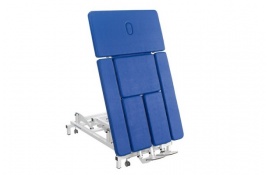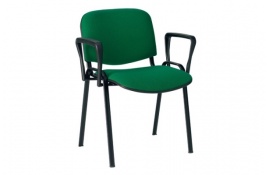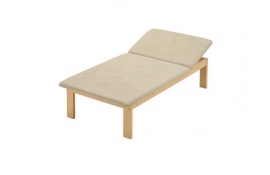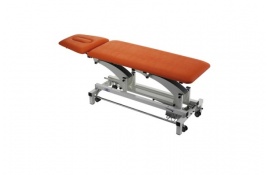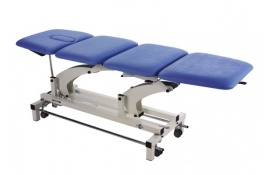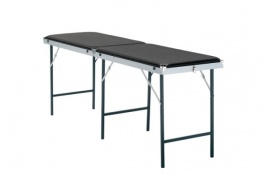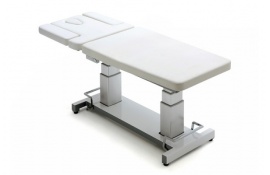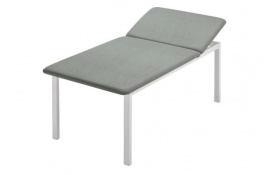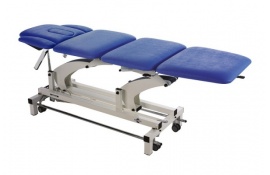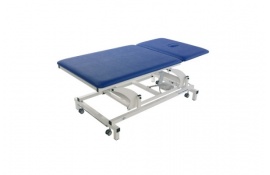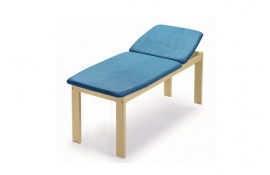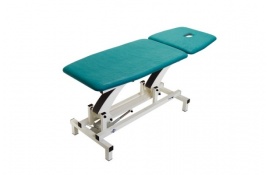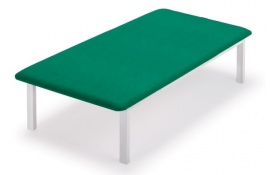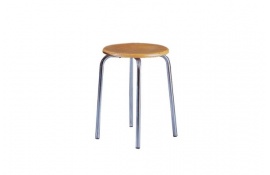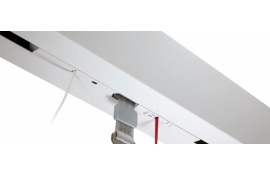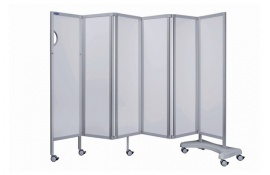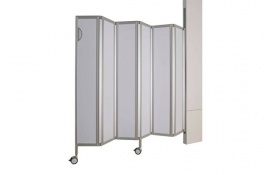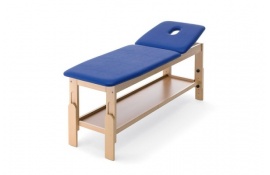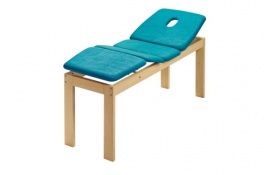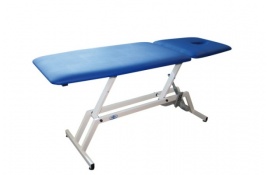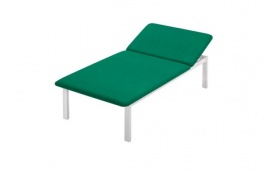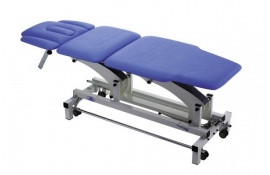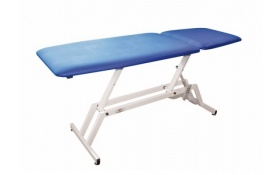This new device, unlike the Tecar and Endotherapy electro-medical devices, allows the physiotherapist to use simultaneously two treatment methods, combining the resistive/capacitive energy transfer and the diffusion of the active agent (where prescribed by the physician), with a hand piece called ROLL-ON (patented).
CAPACITIVE MODE
The warming sensation generated inside the body depends on various factors, and can be perceived by the patient at intensities that range from warmth to intense internal heat. When using capacitive electrodes, the diameter of the electrode and speed of movement must be considered in particular. For the same amount of power applied, larger diameter electrodes increase the temperature more gradually and, in addition, the faster the electrode is moved, the less the heat sensation felt by the patient.
Gastrocnemius treatment example - CAPACITIVE MODE
The operator transfers energy and medicines into the patient’s gastrocnemius muscle .The effect will be hypervascularization of tissue, and consequently its filling with oxygen, nourishing factors, enzymes on the arterial side, and drainage of catabolites on the venous side.
It is good practice to choose the electrode with the largest area possible in relation to the area to be treated. The electrode can be applied, both staying still in the area treated and using circular or linear movements, depending on the area treated and power you wish to apply. It is very important that most of, if not all of, the electrode’s area be in contact with the patient’s skin, following any curves and irregularities in the area treated, and continuously adapting to it. The electrode holder handgrip is specifically designed to minimise effort on the part of the operator and to make the treatment more pleasant for the patient (deep massage action, as if the electrode were an “extension of the operator’s hands”).
MANUAL MODE WITH DIRECT - RESISTIVE COUPLING
Direct coupling means using the TCARE Cellular Regenerator with uninsulated metal electrodes (no dielectric device interposed). The action mechanism, caused by polarity reversal of the current, produces a quicker and more intense increase in heat in tissue deprived of water and electrolytes (bone tissue and adipose tissue especially). This application method is therefore more indicated, perhaps along with the capacitive mode, for pathologies involving these parts of the body. Since the active electrode is not insulated, the current that moves the charges and the temperature generated in the body are less concentrated in the area immediately below the active electrode, producing a directional aspect guided by the passive electrode (return plate).
Knee treatment example - RESISTIVE MODE:
The operator gets the patient to move their knee into flexion/extension to concentrate Tcare action in the inflamed zone and gain a wider range of motion (.e.g. knee collateral ligament)
In other words, one substantial difference from the capacitive mode lies in taking great care when positioning the return electrode, which directs impulses generated by the active electrode. Another difference is that the active electrode remains in a set position or slight rotational movements are made with a diameter slightly larger than that of the electrode used, and continually adjusting the power applied so that the temperature perceived by the patient is pleasant.
THERAPEUTIC INDICATIONS:
- Muscular injuries
- Joint capsulitis
- Distortions
- Cervicalia
- Bone and ligament trauma
- Tendon injuries and bursitis
- Lumbalgia and ischialgia
- Myositis
- Arthrosis processes
- Rehabilitation programmes
BIOLOGICAL EFFECTS OF THE TREATMENT:
- Improvement of arterial flows, with an increase in the quantity of nutritive substances and oxygen
- Increase in metabolism due to these factors and due to an internal rise in temperature (van’t Hoff’s law)
- Increase in endocellular energy transformation (ADP into ATP)
- Improved membrane balance for all cells in the treated area (adipocytes, fibroblasts, etc.)
- Repolarisation of the cell (from pathologies -40Mv to physiologies -70Mv)
- Passage of the extra-cellular matrix from a (pathological) gel state gel state to a (physiological) sol state
- Improvement of venous and lymphatic flow with more efficient expulsion of toxins and catabolites
- Potentiation and synergy with active ingredients to be diffused in the dermis and hypodermis, with evident application advantages compared to taking intramuscularly
ACCESSORIES SUPPLIED:
EL0147 - Mini Capacitive ROLL-ON 40 mm
EL0163 - Mini Resistive ROLL-ON 40 mm
EL0113 - Capacitive ROLL-ON 80 mm
EL0129 - Resistive ROLL-ON 80 mm
EL0122 - Passive plate
EL0164 - Medium Capacitive ROLL-ON 56 mm
EL0165 - Medium Resistive ROLL-ON 56 mm
AC0665 - Elastic band, cm 60
AC0667 - Elastic band, cm 100
EL0148 - Dispenser with cap
EL0128 - Ball cap
EL0149 - Mini dispenser
EL0125 - Passive plate lubrication cream 1000 ml
EL0124 - ROLL-ON lubrication cream 500 ml
Product Information
| Specifications |
|---|
| Working frequency:0,8MHz, 1 MHz, 1,2MHz |
| Output passive plate:1 |
| Manual output capacitive electrode:1 |
| Manual output direct coupling electrode:1 |
| Manual mode:400Ω |
| V rms (aprox.):320 |
| Watt rms (aprox.):150 |
| Input voltage:115÷230VAC ± 10% 50/60Hz |
| Maximum input power:200 W |
| Ambient working temperature:+10 ÷ +30 °C |
| Maximum temperature storage and transport:+10 ÷ +70 °C |
| Maximum humidity storage and transport:25 ÷ 85% |
| Passive plate area:aprox. 220 cm² |
| Roll-On capacitive electrodes:Ø 40 mm - Ø 56 mm - Ø 80 mm. |
| Direct coupling electrodes:Ø 40 mm - Ø 56 mm – Ø 80 mm |
| Active medical devices:CLASS II B |
| Weight:40 kg |
| Dimensions:60 x 80 x 115 h cm |

